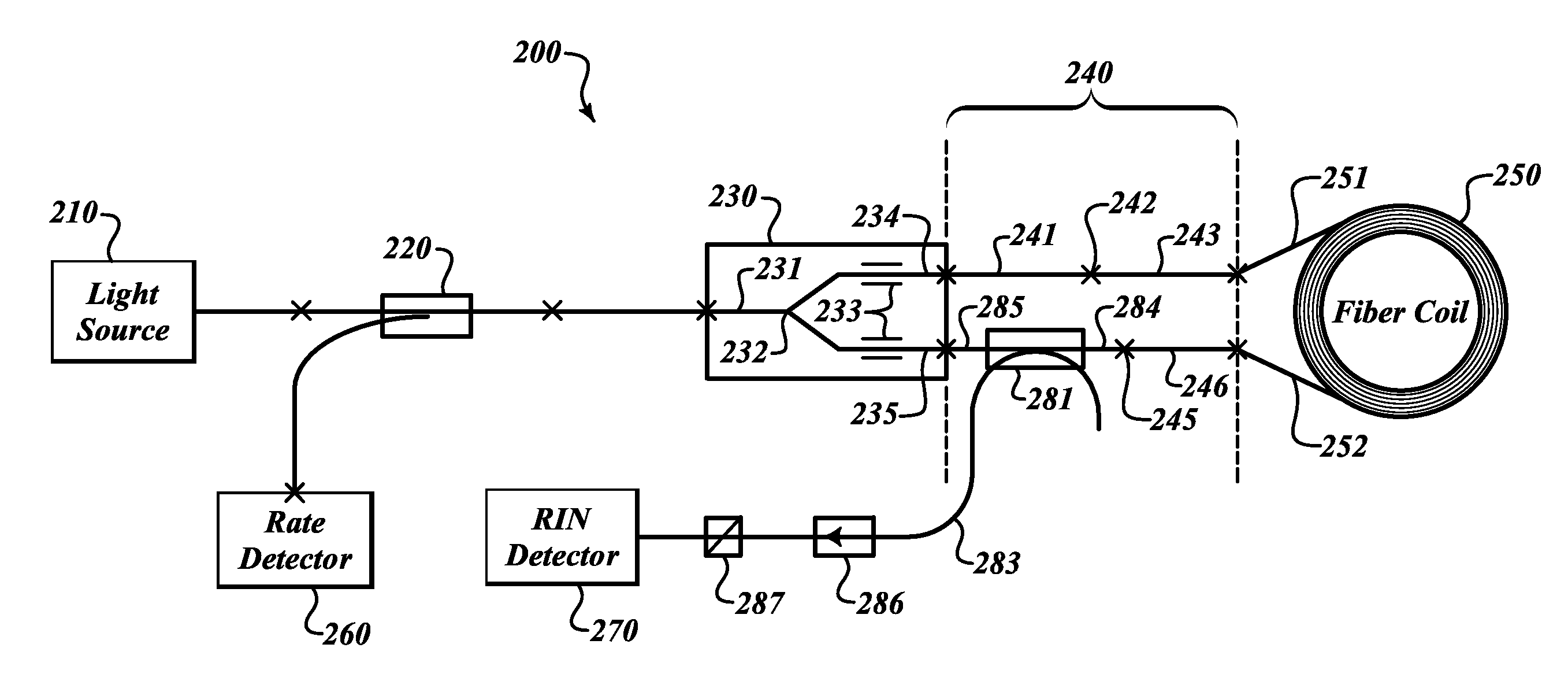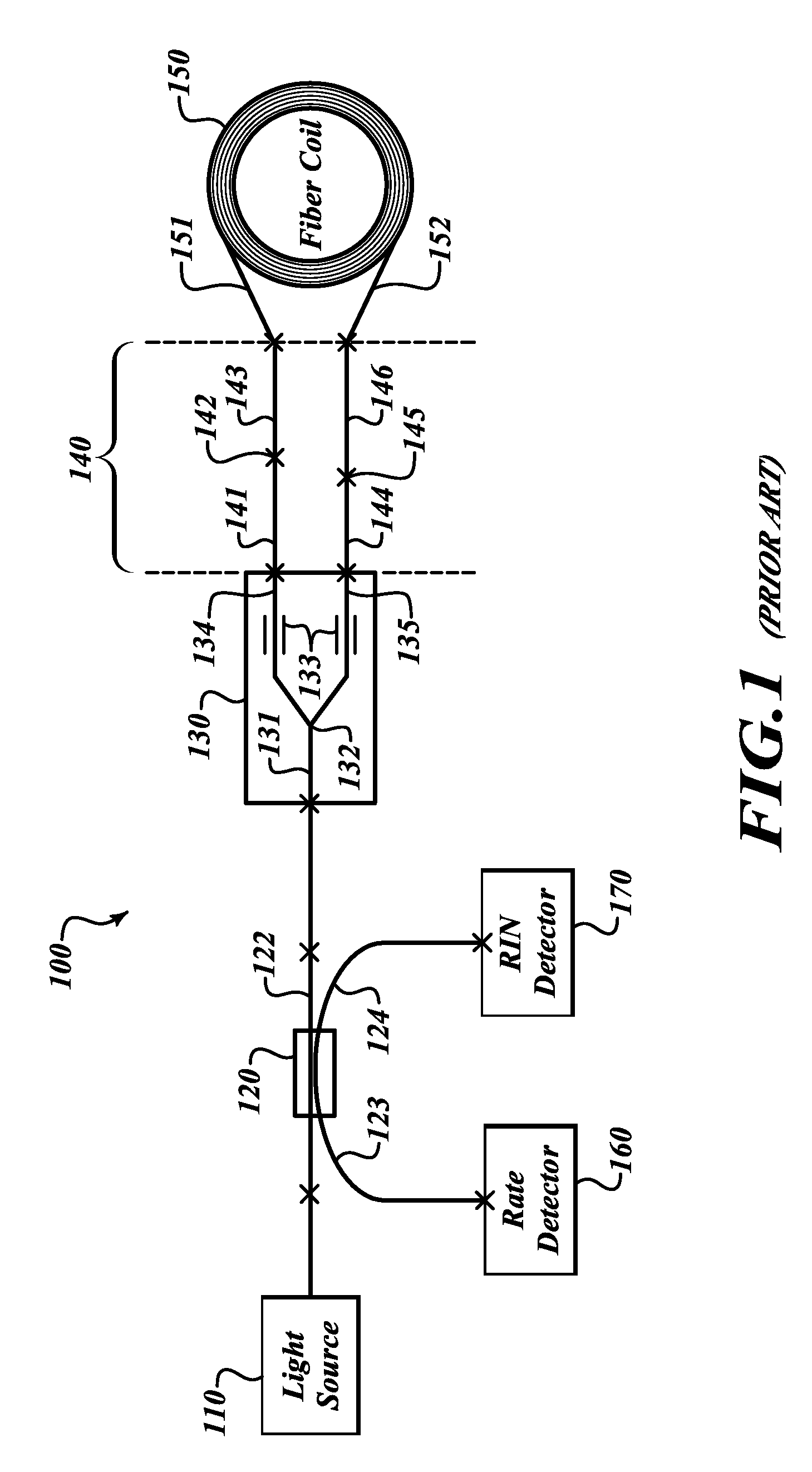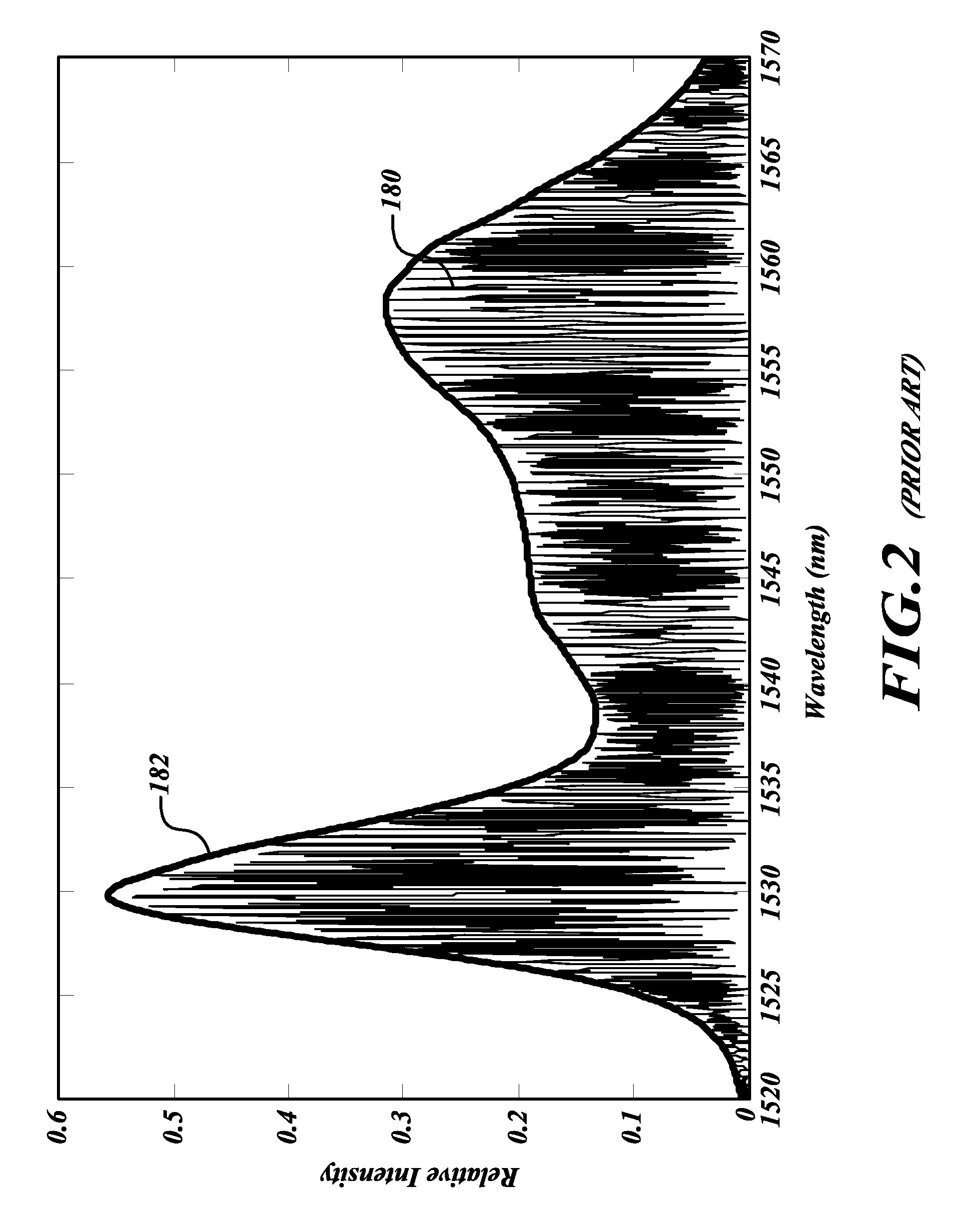Systems and methods for effective relative intensity noise (RIN) subtraction in depolarized gyros
a technology of relative intensity noise and subtraction method, which is applied in the direction of speed measurement using gyroscopic effects, instruments, surveying and navigation, etc., can solve the problems of significant degradation of rin subtraction efficiency, ineffective rin subtraction, depolarized gyroscope, etc., to improve the arw performance of depolarized gyros, more effective rin subtraction, and more efficient noise subtraction
- Summary
- Abstract
- Description
- Claims
- Application Information
AI Technical Summary
Benefits of technology
Problems solved by technology
Method used
Image
Examples
Embodiment Construction
[0011]Relative intensity noise (RIN) of a broadband light source originates from beating of the different optical frequency components contained in the light source. For an interferometric fiber optic gyroscope (IFOG), the RIN at the rate detector is determined by the light source spectrum reached the detector. In order to effectively subtract the intensity noise from the rate detector, another detector (RIN detector) dedicated to record the RIN of the light source at a different place of the optical circuit is desirable to receive light with substantially the same spectrum as that of the rate detector. The present invention describes systems and methods for effective RIN subtraction in depolarized gyros using matched light spectra at RIN and rate detectors.
[0012]Referring to FIG. 3, according to one embodiment of the present invention, a depolarized gyro 200 includes a light source 210, a directional coupler 220, an integrated optical circuit (IOC) 230, and a fiber loop 250. These ...
PUM
 Login to View More
Login to View More Abstract
Description
Claims
Application Information
 Login to View More
Login to View More - R&D
- Intellectual Property
- Life Sciences
- Materials
- Tech Scout
- Unparalleled Data Quality
- Higher Quality Content
- 60% Fewer Hallucinations
Browse by: Latest US Patents, China's latest patents, Technical Efficacy Thesaurus, Application Domain, Technology Topic, Popular Technical Reports.
© 2025 PatSnap. All rights reserved.Legal|Privacy policy|Modern Slavery Act Transparency Statement|Sitemap|About US| Contact US: help@patsnap.com



